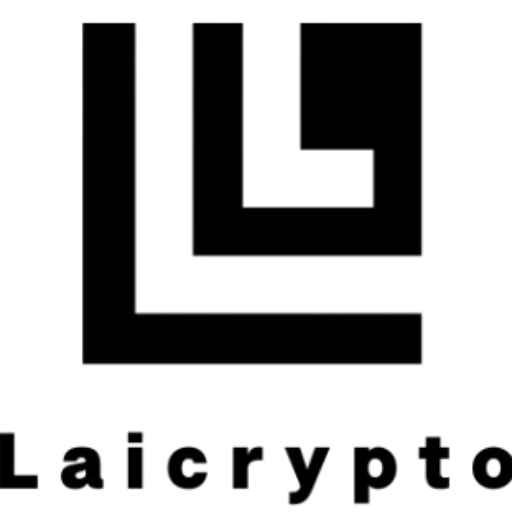
Disclosure: The views and opinions expressed here belong solely to the author and do not represent the views and opinions of crypto.news’ editorial.
After writing about the regulation and taxation of digital assets since 2017, I did not think I was ever going to get to write this article during my lifetime, especially together with my editor, Max Yakubowski, still by my side. So here we go… 2025 was a breakout year for tokenization of the U.S. financial system and for digital assets in general.
Summary
- U.S. GENIUS Act catalyzes regulated, fully backed stablecoins; major U.S. firms and global banks across Europe, Japan, and Asia accelerate issuance, while countries from India to the UAE push sovereign or regulated stablecoin models.
- AML standards (FATF), U.S. BSA/FinCEN rules, CARF global tax reporting (2027–28), and new U.S. broker disclosure rules widen oversight. Still, uneven cross-border implementation and unilateral digital tax regimes create regulatory and tax inconsistency.
- Divergent AML, tax, and monetary policy needs prevent a unified worldwide digital payment system; nations resist ceding financial sovereignty even as tokenization advances step-by-step through national frameworks and bilateral or regional initiatives.
The United States federal GENIUS Act created a regulatory framework for stablecoins, requiring 100% reserve backing with liquid assets and monthly public disclosure of reserves. This legislation spurred growth, with one survey showing 41% of stablecoin-using organizations reporting cost savings of 10% or more, primarily in cross-border payments [can you believe this, William Quigley, the cofounder of Tether (USDT), the first ever stablecoin issued in 2013?].
Major U.S. financial companies like President Trump’s family’s company, World Liberty Financial, launched a stablecoin called USD1 that is pegged to the U.S. dollar and backed by U.S. Treasuries, following PayPal, which is noted as being the first major U.S. financial company to launch a stablecoin, PayPal USD (PYUSD), available to a wider audience.
Several major global banks have announced plans to explore or issue stablecoins, including a group of ten banks that includes Bank of America, Deutsche Bank, Goldman Sachs, and Citi. There is also a separate group of nine European banks, which includes ING, Barclays, and Santander, following the path. Japan’s three largest banks, MUFG, Sumitomo Mitsui Financial Group, and Mizuho, are also planning to issue a stablecoin jointly.
In Hong Kong, BSN’s technical architect, Red Date Technology, has explored ways to support stablecoins and central bank digital currencies within its ecosystem for payment and interoperability purposes. Russia is linked to the stablecoin A7A5, a ruble-pegged cryptocurrency designed to help circumvent sanctions. India is preparing to launch a regulated, sovereign-backed stablecoin called the Asset Reserve Certificate, with a potential Q1 2026 rollout. UAE and Saudi Arabia are actively working on a joint stablecoin called ABER and have already issued regulated stablecoins as part of their national financial modernization and digital economy strategies.
Concurrently, the U.S. Senate is considering a bill that would establish a framework for private companies to issue stablecoins, such as Walmart, Amazon, and Cloudflare, which are reportedly exploring corporate stablecoins as a customer payment option. Google is engaging in discussions to integrate stablecoins into its payment systems, indicating a potential future involvement in the stablecoin market. Initial talks have been held with crypto firms, and Google Cloud has accepted payments in digital assets and stablecoin form, setting a precedent for cloud-based invoicing in crypto. Meta, after abandoning its Libra/Diem stablecoin project, is looking into integrating third-party stablecoins like USDC (USDC) and Tether to reduce costs for creator payouts on platforms like Instagram, Facebook, and WhatsApp.
In China, with a partnership with JP Morgan, Alibaba’s cross-border e-commerce division is creating a system that uses “deposit tokens,” which are a compliant alternative to traditional stablecoins in China. Indian tech companies are developing a stablecoin named the Asset Reserve Certificate. In Japan, Sony’s banking division, Sony Bank, will launch a stablecoin. A German-based entity named AllUnity, a joint venture involving Deutsche Bank’s asset manager DWS, Flow Traders, and Galaxy, has received regulatory approval and started issuing a euro-denominated stablecoin. Deutsche Telekom is involved with stablecoins through its strategic partnerships and investments in blockchain technology companies, such as Theta Network and Celo.
However, the Financial Stability Board noted that regulatory implementation across jurisdictions remains uneven and inconsistent, with significant gaps in the regulation of global stablecoin arrangements. The same can be said about the Organisation for Economic Co-operation and Development’s handling of the digital taxation project by developing a two-pillar solution to address tax challenges from the digitalization of the economy, which has led to many countries separately pursuing their own unilateral digital services taxes, creating potential for a fragmented system and trade disputes.
A global regulatory and tax system for a globally tokenized financial structure
A globally implemented digital payment system faces significant hurdles and is generally considered unfeasible without a high degree of international regulatory and tax agreement. The primary reasons include:
Anti-money laundering laws:
Each country has sovereignty over its financial systems and currency. There has been a global implementation of AML rules for digital assets, led by the Financial Action Task Force, which extended its AML/CFT standards to include Virtual Asset Service Providers in 2019, requiring them to implement measures like customer due diligence, and the “Travel Rule,” which mandates collecting and sharing originator and beneficiary information for transactions. While many countries have adopted these rules, implementation is ongoing and varies across jurisdictions, with some implementing robust frameworks and others still developing them.
The U.S. has implemented AML rules for digital assets, primarily by requiring certain companies to register with FinCEN and follow existing Bank Secrecy Act regulations. However, some proposed legislation is still pending. Digital asset intermediaries like exchanges and wallet providers are subject to rules requiring them to perform Know Your Customer checks and comply with the “Travel Rule,” which mandates the collection and transmission of identifying information for transactions above a certain threshold.
Taxation and reporting:
Tax laws vary widely. A global system would need a universal method for tracking, reporting, and remitting sales taxes, VAT, income taxes on transactions, and capital gains across borders, which currently rely on complex, country-specific rules and a global tax treaty network.
The OECD’s digital asset tax initiative is primarily the development of the Crypto-Asset Reporting Framework, or CARF, a new global standard to improve tax transparency and compliance regarding crypto-asset transactions. The CARF is being widely implemented, with over 60 nations, including most G7 and G20 economies, committing to it. The first wave of countries will begin exchanging data in 2027, followed by a second wave in 2028. The framework is a global initiative developed by the OECD to standardize tax reporting for crypto-asset transactions, requiring crypto-asset service providers to collect and report information on their users, such as tax residence and identification numbers, to their domestic tax authorities for cross-border exchange. The goal is to provide tax authorities with the necessary data to monitor crypto-asset revenues and ensure that taxes are paid correctly.
This year, in the U.S., Centralized Broker tax disclosure rules require centralized brokers to report customer transactions to the IRS, with new rules for digital assets, effective in 2025. For sales in 2025, brokers must file a new Form 1099-DA with gross proceeds. For transactions starting in 2026, brokers must also report the customer’s adjusted basis and, in certain cases, may be required to implement backup withholding.
While the IRS had finalized regulations to require decentralized finance platforms to report digital asset transactions starting in 2027, the rules were nullified by Congress in April 2025. Therefore, DeFi brokers are not currently subject to these specific tax disclosure requirements, though they were intended to include reporting gross proceeds on Form 1099-DA, along with transitional relief from penalties for 2027.
However, the underlying tax obligation for individual US taxpayers who report on their worldwide digital asset income and gains remains ongoing. The burden of accurate record-keeping and reporting falls on the U.S. individual taxpayer. Taxpayers must report any taxable event/ transaction involving a digital asset that results in a sale or exchange (e.g., crypto-to-crypto trades, selling crypto for fiat currency, using crypto to pay for goods/services) to the IRS. And track details like the date of acquisition, cost basis (original purchase price), date of disposition, and fair market value at the time of each transaction to calculate the capital gains or losses.
If a U.S. taxpayer holds digital asserts in foreign financial institutions: FATCA requires U.S. taxpayers to report specified foreign financial assets on Form 8938 if their value exceeds $50,000, while FBAR requires the U.S. taxpayer to report the aggregate value of all foreign financial accounts that exceed a total of $10,000 at any time during the year to the Financial Crimes Enforcement Network (Form 114).
Monetary policy and stability:
While current systems (like SWIFT, credit card networks, and some cryptocurrencies) facilitate international payments, they do so by operating within the existing patchwork of national regulations and relying on intermediary banking systems, rather than existing as a single, unified, and universally agreed-upon global framework.
A universal regulatory system for digital assets could interfere with individual central banks’ abilities to manage their national monetary policy, control inflation, and maintain economic stability. So, the will to adopt globally compatible rules for digital assets is hindered by Nations that are often reluctant to cede control of their financial infrastructure to an external or supranational entity.
Achieving the necessary political consensus for such a massive undertaking is a monumental challenge. Still, slowly and surely, the global financial markets are tokenizing, and the regulatory and taxation framework is developing alongside to accommodate this one step at a time.



